Nutella’s history officially begins in 1964, but the story behind the product cannot overlook its ancestors, Giandujot, Supercrema, and perhaps most importantly, the family of artisans who put those specialties on the market: the Ferreros, who origi-nally came from a small village lost amid the hills of the Lang-he region, in the lower Piedmont area of northern Italy. This chronology goes back over the key phases, starting from when Pietro Ferrero opened the family’s first store, and ends with the worldwide celebration of the product’s fiftieth anniversary. It is almost a century of events, during which Nutella has taken a leading role in the last fifty years, earning a place among the world’s best loved brands.
The Timeline of a Success
-
1923
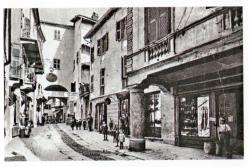
A pastry shop in the Langhe
After working as an apprentice baker for a few years, twenty-fiveyear-old Pietro Ferrero opens a pastry shop in Dogliani, in the Langhe region (a hilly area near the Tanaro River in Piedmont, northern Italy). Under the porticoes of that small town where Pietro’s shop is located, his cakes soon win over the heart of Piera Cillario, four years his junior. They will wed in 1924.
-
1925
Michele Ferrero is born
The pastry-maker couple soon experiences the joy of the arrival of an heir, Michele, born on April 26, in Dogliani. Monsù (the word in local dialect for “Mister”) Pietro is a determined and ambitious worker, but that town in the hills is simply too small for him, so he decides to move his family to the capital of the area, Alba, and starts working in a shop that is already well established.
-
1933
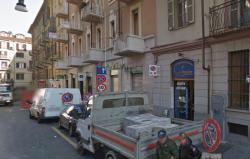
The first shop in Turin
The enterprising pastry maker takes a big leap and moves to Turin, where he opens his pastry shop close to the Porta Nuova train station. Five years later he will try his luck in Somalia, selling panettoni (a traditional Italian dessert bread cake) to Italy’s colonial troops.
Pietro Ferrero’s adventure lasts just two years. Having been unsuccessful, he moves back to Turin.
-
1937
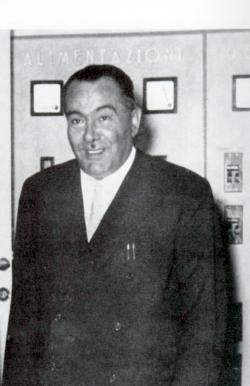
Giovanni Ferrero founds his department stores
Pietro has a brother, Giovanni Ferrero (photo), seven years his junior. Giovanni grows up in Dogliani and moves to Alba, the capital of the Langhe region, in the 1930s, where he starts his own business.
On November 2, Giovanni opens a company for the wholesale of foodstuffs, confectionary products, and brewer’s yeast. The business is in his wife’s name: Ottavia Amerio is a young salesgirl he had met in Canel-
li, a hillside town not far from Alba. They will marry in 1930. Giovanni Ferrero is the company’s procuratore speciale, which gives him the power of attorney.
-
1940
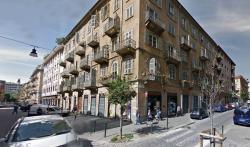
Seven shop windows
In an elegant part of Turin, Pietro and Piera Ferrero open a pastry shop that boasts seven shop windows: business is good, their customers are loyal, and their products are very popular.
World War II breaks out and bombs are dropped from the skies: the family decides to move back to Alba permanently.
-
1942
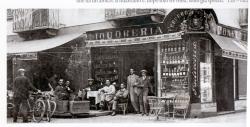
The workshop in alba
Pietro and Piera, in spite of the problems related to the war, manage to resume their pastry-making business. Pietro invents some new specialties on the small premises located inside a courtyard in the historic quarter of Alba.
Piera works behind the counter of a shop called Rava, a liquor-confectionary-pastry shop owned by her relatives, the most beautiful one of its kind in the city. The shop is located on the main road, known as via Maestra.
-
1945
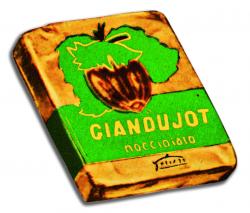
a Pastone called Giandujot
In the fall, the Ferreros’ artisanal activity takes off, thanks to Pietro’s talent at creating a “cake for the humble,” a pastone (the name it would be given by Pietro’s son Michele a few years later): it is a surrogate made with very little cocoa, hazelnuts, sugar, and vegetable oil.
It is the debut of the Giandujot, a delicious ingot wrapped in tin foil that’s meant to be sliced and eaten with bread. It is an instant success.
-
1946
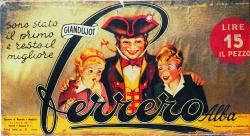
The Ferrero company is established
On May 14, “P. Ferrero owned by Cillario Pierina previously owned by Giuseppe Ferrero, situated in Alba, and the producer of chocolate, nougat, and confectionary products in general” is registered at the Chamber of Commerce in Cuneo. This is the official act that establishes the company.
At the end of the year, the company’s production moves, along with its thirty workers, to a warehouse in Alba close to the Tanaro River. The Ferrero plant is still located there today.
Giovanni Ferrero and Pietro become partners, with Giovanni overseeing the commercial side of the business.
-
1947
The hazelnut-flavored wedge
To try to forget the miseries of war, Ferrero starts producing a small delicacy: the Cremino, an individually wrapped hazelnut-flavored specialty as big as a wedge of spreadable cheese. Although most Italians had been left with little money in their pockets, everyone could afford to pay five lire (twenty cents out of a dollar today) for 21 grams (nearly .75 ounces) of rediscovered sweetness.
-
1948
The company is flooded
On the morning of September 4, 1948, in Alba, a small river overflows its banks and floods the Ferrero premises: the 120 women who are there working when it happens clamber onto the roofs and are rescued. Pietro does everything in his power to save the company, working, alongside his employees, shoveling mud for three days and three nights.
Production starts up again, but Pietro’s health has been greatly affected.
-
1949
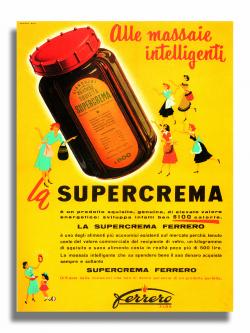
Pietro Ferrero dies and supercrema debuts
On March 2, just when he is finally starting to taste the flavor of success, Pietro Ferrero (photo) dies of a heart attack at the age of fifty-one. The company, vigorously managed by his brother Giovanni, and his widow, Piera, continues to prosper, also thanks to a new speciality.
It is the debut of the spreadable Giandujot. Called Supercrema, it is the real ancestor of Nutella. The label on the 1-kilogram (2.2-lb.) jar reads: “A
delicious, genuine product with high energy value, it in fact has no fewer than 5,100 calories.” A version called Nusscreme also exists, which is sold in large tin containers: it is a “preserved food product having a high energy value.”
-
1950
General partnership
After Pietro’s death, on May 5 in Turin, the Società P. Ferrero & C is registered as a general partnership. It is the first real restructuring of the company, leaving behind its artisanal phase once and for all. It has three members, each one with an equal share: Pietro’s widow, Piera Cillario Ferrero; their son, Michele; and Pietro’s brother, Giovanni. The family divides up the work that is to be done: Michele, age twenty-five, deals with production; “Uncle Giovanni,” with sales; while “Mamma Piera” oversees the skilled workers.
The results of the industrial activity are brilliant: there are three hundred workers with an output of 15.8 metric tons (17 tons) per year, which will double by 1957.
-
1951
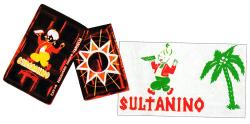
Sultanino, the first product invented by Michele
The Sultanino is the first product invented by the young, twenty-six-year-old Michele Ferrero: it is a new kind of treat, a low-priced candy bar conceived to be eaten by children as a snack. He invents it by himself to surprise Uncle Giovanni, buying a new piece of equipment to be able to do so. This new product is instantly successful, and in just one year, production grows from 0.6 metric tons at the start to 2.8 metric tons (.7 to 3.1 tons) by 1952.
-
1952
Giovanni creates the società caffè Ferrero
Giovanni Ferrero’s business activity continues, in the company of several partners, independently of the confectionary company that had been created by his brother.
The SAS Caffè Ferrero is founded, again owned by Giovanni. Giovanni Ferrero buys shares of other Italian food companies, such as Venchi Unica.
-
1953
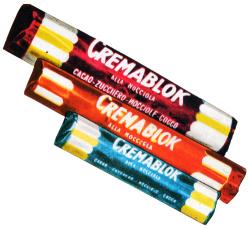
Cremablock
Another product invented by Michele begins production in Alba: Cremablock, 36 grams (1.5 ounces) of chocolate with hazelnut filling, sold for about 70 cents out of a dollar.
The young confectionary business beats the competition, thanks to its choice of simple packaging with small quantities, instead of expensive luxury packaging.
-
1954
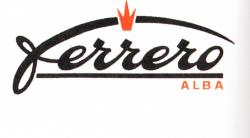
Good-bye, Gianduia brand
Until now the company logo had been Gianduia, the Turinese masked character who smiled as he embraced two children, with the words: “I was the first, and I’m still the best.” The design is replaced by a stylized Ferrero logo, written in small italics and topped by a stylized crown symbolizing Alba, famous for being “the city with a hundred towers.”
A new product appears in Italian stores: Cremalba. Sold in small chunks it costs 30, 50, or 100 lire (between 70 cents and two dollars today). The product is made from powdered milk, coconut butter, eggs, and sugar, and it comes in several flavors: cocoa, coffee, zabaglione, or with candied fruit.
-
1955
Ferrero picture card albums
In Italy, it is the start of the “Grande concorso a premi ‘Caccia Grossa’ ” (“Big Hunt” Prize competition): contestants who succeed in completing an album with all one hundred picture cards of wild animals (there’s an elephant on the album cover), are awarded plastic toy animals, dolls, or watches.
The picture card collection will continue into the 1970s.
-
1956
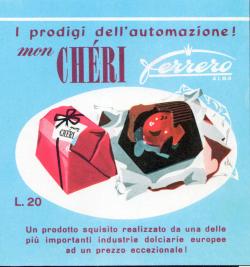
Mon chéri conquers Germany
The first Ferrero praline makes its debut: a praline with a liquor cherry heart, surrounded by a crust of sugar and coated in dark chocolate. Its name is Mon Chéri, and it is wrapped in red paper to express the idea of it being a special gift.
The first Ferrero plant abroad is built in an abandoned factory that had manufactured war materials in Allendorf, Germany, just two hours north of Frankfurt. “Assia GmbH”, its name, immediately begins producing Mon Chéri, whose slogan is “some of the fiery charm of the South.” The praline is sold individually close to the checkout counter, and it costs 50 cents out of a dollar today. From an initial 0.9 metric tons (1 ton) per day in 1957, the following year a total of 20 metric tons (22 tons) are reached. It gradually becomes the best-selling chocolate in Germany, with 500 million pieces per year.
-
1957
Giovanni Ferrero dies
After being awarded an Order of Merit for Labor in 1955, Giovanni Ferrero becomes an important figure of reference in Italy’s confectionary sector. He also attempts to establish a trade association to bring together the most important companies in that period, such as Motta, Alemagna, Venchi Unica, and Pavesi.
At the peak of his life as an entrepreneur, Giovanni Ferrero dies suddenly on October 25, 1957. His share of the Ferrero company does not go to his wife, who is instead given a payoff as had been established in the company agreement underwritten in 1950.
After her husband’s death, Ottavia Amerio Ferrero dedicates the rest of her long life to charity. She will die in 1992 at the age of eighty-five.
-
1958
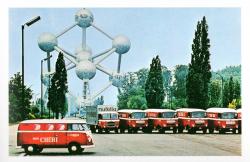
Ferrero in Belgium and austria
The company continues its attempt to conquer other European countries: a Ferrero commercial headquarters opens in Belgium. While Brussels becomes famous the world over for its World’s Fair, on April 29, Ferrero launches Mon Chéri, competing on a par with the many companies that are part of the history of the praline, and eventually conquering a leading position on the Belgian market.
The business company Ducalba Susswaren Import GmbH is established in Austria.
In the Lombard city of Pozzuolo Martesana, 25 kilometers (16 miles) east of Milan, Ferrero starts experimenting with baked products and syrups, so that it can get a share of the nascent children’s snacks market.
-
1959
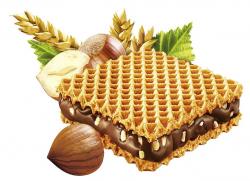
Germans like the hanuta wafer
A new Ferrero product appears on the shelves in Germany: the crunchy hazelnut-flavored Hanuta wafer. One of the secrets of its success is the set of collectible picture cards that comes with every packet.
-
1960
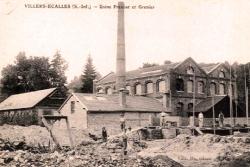
The French factory in normandy
Dulcea is set up in France, at first as a distribution company. In Villers-Écalles, Normandy, 25 kilometers (16 miles) from Rouen, Ferrero buys an old textile factory and turns it into a production plant. It will become one of the most important in Europe.
The hazelnuts that grow in the Langhe are no longer enough: the variety known as avellane (cobnuts) that are grown in southern Italy are needed, too, so Ferrero opens a factory in Lauro, in the Nola area, south of Naples, where they can be processed. The warehouses will be handed over to a local businessman in 1985, when the company opens up two new plants in the Campania area hit by the earthquake in 1981.
-
1961
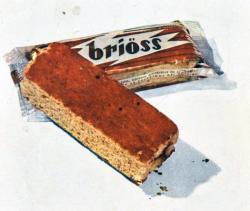
Brioss, the first snack
After much testing, the first Ferrero snack arrives in Italian pantries. The name of the snack is Brioss: a slice of sponge cake filled with apricot or cherry preserves that’s still being produced today.
Ferrero has three industrial sites in Italy, for a monthly production of 4,700 metric tons (5,180 tons) of confectionary products.
-
1962
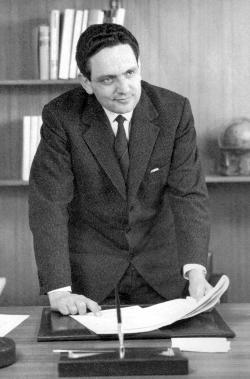
Villa Piera is born in Germany
Villa Piera opens in Allendorf, Germany, providing accommodation for young Italian women who emigrate to Germany to work for Ferrero. At the start, it has three hundred young women as guests, many of whom come from Sardinia. Social workers and doctors are also hired to assist them.
Ferrero becomes a joint-stock company with its business headquarters in Turin: Piera Cillario is appointed president, a post she will hold until 1980, the year of her death.
Her son, Michele Ferrero (photo), not yet forty, is the company CEO. All the shares have always remained in family hands.
-
1963
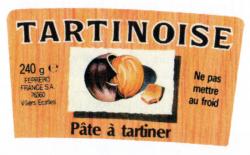
Tartinoise debuts in France
A spreadable hazelnut cream makes its debut on the French market. It’s called Tartinoise, and it comes from Supercrema, Nutella’s ancestor.
Ferrero consolidates in Germany: in Sachsenhausen, the area south of Frankfurt just past the Main River, an eleven-story building is the new German management headquarters.
In Rozenlaan, near Breda, Ferrero Holland also begins its activity: its offices are located in a small shop and Mon Chéri is the first product sold there.
On September 11, in Turin, Pietro is born, the first child of Michele and Maria Franca Fissolo, who were married the year before.
-
1964
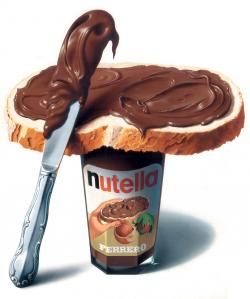
The first jar in Italy
Nutella is officially launched on April 20, when production starts at the company plant in Alba. In May, this hazelnut cream is introduced to consumers across Italy, sold in an eight-sided glass container and advertised on billboards.
Ferrero transfers its marketing and administration to the new management headquarters located in Pino Torinese, on the hills close to Turin. A new logo is patented: the small italic lettering is replaced by a more impelling representation of the name FERRERO, now in golden capital letters with an attractive typeface. Within two years’ time, the same logo will be used for all its products.
On September 21, in Turin, Maria Franca and Michele’s second child is born, Giovanni Ferrero. He will become the Group’s CEO.
-
1965
Nutella is spread in Germany
A year after its launch, Nutella takes on the German market. The hazelnut cream is introduced in a new, distinctive jar, which will become as famous as the Coca-Cola contour bottle.
-
1966
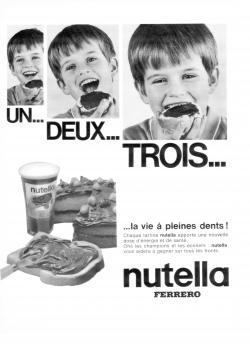
The product’s debut in France and mini containers
Nutella is sold in France. The new brand, pronounced with an accent on the final “a,” is popular across the Alps, too. Hazelnut cream is sold in handy coupelles (fruit salad bowls) as well as in decorated glasses to be kept and used as glassware.
The first novelty is introduced in Italy: handy packaging that includes three plastic 30-gram (1-ounce) mini containers, so that consumers can eat Nutella even when they’re outside their home.
The moment has come to find a place in the home of chocolate, Switzerland, with the company called Miralbana, in Zurich; Ferrero United, in the United Kingdom, is also set up. By this time, a third of the turnover accrues from foreign partners.
-
1967
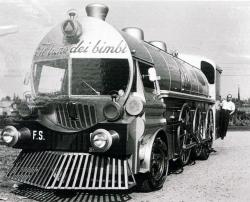
Debut on Italian television
In Italy, Nutella debuts on Carosello, a TV program that’s broadcast every evening and consists of five two-minute sketches during which the product cannot be named directly, followed by an advertising thirty-second coda
(“tail”). The commercial claims that four thousand vehicles transport hazelnut cream “to millions of children who spread Nutella on bread.”
The first sports sponsorships also begin, with the fiftieth Giro d’Italia, won by cyclist Felice Gimondi: after each stage the winner is awarded a prize marked Ferrero. Following cyclists all over Italy is the “Trenino dei bimbi Ferrero,” a large truck fitted out like a locomotive that hands out confectionary products.
-
1968
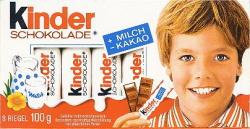
Kinder’s debut
Children like Nutella, especially as a snack. Thanks to the baby-boom generation, children born between 1945 and 1964, these young consumers turn into a veritable army. Hence, Michele Ferrero conceives a product for them that will especially convince their parents: Kinder Chocolate, chocolate bars filled with milk, which come wrapped in small individual portions.
The company opens a commercial operating headquarters in Malmö, Scandinavia.
The Ferrero family moves from Alba to Pino Torinese so that they can be closer to the management headquarters.
-
1969
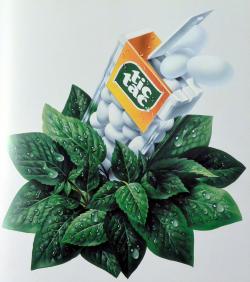
Tic Tac for americans
After creating many sweet products made from hazelnuts and cocoa, the confectionary company invents a mint that in a few years’ time will become a worldwide success. The mint is named Tic Tac. Just like Nutella, it’s a unique product that has been analyzed in great depth; it takes its name from its innovative pocket-sized packaging.
Ferrero also goes overseas and lands in the United States. Its first headquarters is in Yonkers, New York. In the space of fifteen years Ferrero USA reaches a turnover of $10 million, with its most successful product being Tic Tac. A catchy jingle is used to advertise the product: “Put a Tic Tac in your mouth and get a bang out of life!”
Michele Ferrero is awarded the Goldener Zuckerhut prize by the German food magazine Lebensmittel Zeitung.
-
1970
A multinational with 7,700 workers
In France, Dulcea becomes Ferrero France, with its headquarters in Mont-Saint-Aignan, Normandy, just a few miles from the plant.
Thanks to Nutella, Mon Chéri, and Tic Tac, Ferrero’s global turnover is close to $1.2 billion in today’s money, with 7,700 workers and a daily production of 500 metric tons (551 tons) including spreads, pralines, candy, and snacks.
Piera Ferrero and her son Michele inaugurate the new location of Ferrero Olanda in Riethil, 25 miles south of Rotterdam. In Pino Torinese, close to Turin, the company advertising division, called Pubbliregia, is set up, where both Italian and foreign creatives work on the advertising campaigns. Pubbliregia
will become an independent company in the 1990s.
-
1971
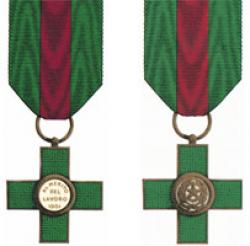
Michele Ferrero is awarded an order of Merit for Labor
Italy awards Michele Ferrero an Order of Merit for Labor. The president of the Italian Republic Giovanni Saragat makes the following inspiring statement: “The personal impetus given by Michele Ferrero, after the death of founders Pietro and Giovanni when he was just twenty-four years old, has taken the company to a leading place in Italy in terms of the quantity of output, and of considerable importance abroad for the ever-growing diffusion of its products.”
-
1972
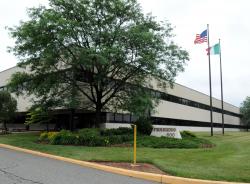
The office on Park avenue, new York city
Ferrero in the United States begins its New York period, which will last until 1994, when company headquarters will be relocated to New Jersey, where it is still today. But the company’s first offices are on Park
Avenue in Manhattan; later, it will move to Fifth Avenue, and, after that, to a whole floor on Madison Avenue and 41st Street. A real tea brews in a single-dose cup with a straw: it’s the Estathé revolution, the first industrially produced iced tea in Italy. The age-old tradition of drinking hot tea in a cup at five in the afternoon is completely revolutionized. Thirty years later, the “marriage” with Nutella will take place with the invention of Snack & Drink packages.
-
1973
The international holding in Luxembourg
The Ferrero International SA holding is constituted in Luxembourg: all the foreign stakeholders will join it, except for the German Ferrero GmbH.
Michele Ferrero is awarded another international prize, and he is the first European to receive it: it’s the Kettle Award given by the American publication Candy Industry Magazine.
The turnover of the Ferrero Group continues to rise, with fifty-six direct sales outlets in Italy, 3,000 distribution workers, 1,500 vehicles supplying 300,000 points of sale, and 6,500 employees.
-
1974
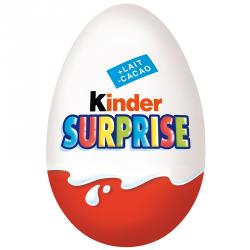
With Kinder it’s easter every day
What is it about Easter eggs that kids love the most? The gift inside the egg. Well then, why should they experience this thrill only once a year? Why not every day . . . Thanks to this idea, “Signor Michele,” which is what everyone at the company calls him, creates the highly successful chocolate egg known as Kinder Surprise.
The Kinder Division debuts, an umbrella company brand that includes chocolate bars, Brioss snacks, and now the eggs. Nutella production is equal to over 20,000 metric tons (22,000 tons) in the world. Today, it is almost twenty times that.
Ferrero Australia opens in Sydney, and Ferrero Canada is set up in Toronto, which in the 1970s and 1980s mostly operates in distribution.
-
1975
Ferrero Ireland and a factory in ecuador
On July 22, Ferrero Ireland Limited is born, and in Cork, just a three-hour drive south from Dublin, a plant is built to produce Tic Tac. It is currently the company’s largest mint-producing plant, with exports all over the world.
That same year, a laboratory where cocoa is analyzed is built in Quito, Ecuador; a plant will soon be built there, as well.
In September, the Ferrero family moves to Brussels.
-
1976
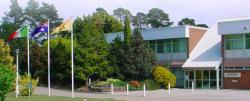
Nutella lands in australia
Nutella’s gradual expansion to the East begins. A Ferrero plant is built in Lithgow, Australia, about 150 kilometers (90 miles) from Sydney, in New South Wales, with lines for the production of hazelnut cream and Tic Tac.
For the development and production of patented machinery dedicated to the packaging of specialties, Ferrero OMS is founded, later to become Ferrero Ingegneria.
-
1977
a headquarters in hong Kong
Ferrero is the leading company in the Italian confectionary sector: in top place for the production of chocolate bars, second after IBP (Industrie Buitoni Perugina) for chocolate treats (Rocher had not been invented yet), and at the top for spreadable cream.
Operating headquarters open up in Hong Kong.
-
1978
Ferrero Japan
In order to supply Central America with Tic Tac, the first machines that make the mints arrive in Quito, Ecuador; this will be followed by a Ferrero plant completed in 1990.
A new sign appears on a building in Tokyo: Ferrero Japan Limited.
-
1979
In Germany: there really is nutella inside
In Germany, Ferrero replies to its competitors with a claim destined to become part of everyday language: “Nur wo Nutella draufsteht, ist auch Nutella drin” (“You know there’s Nutella inside only if the label actually says Nutella”).
-
1980
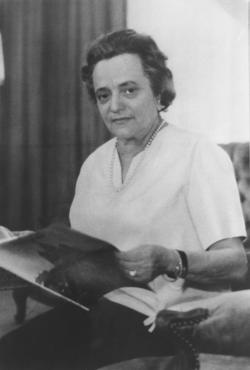
Farewell to Piera Cillario Ferrero
In May, Michele Ferrero steps down as CEO and hands the post over to the managers: Virgilio Motta and Luciano Chiesa.
On December 3, 1980, at the age of seventy-eight, company founder Piera Cillario (photo) dies.
Nutella output is over 50,000 metric tons (55,000 tons) in the world.
-
1981
Ferrero international debuts
From January 1, the company restructuring becomes operative: Ferrero S.p.A. and Ferrero Sud S.p.A. are created in Italy, while Ferrero International B.V. is set up as the holding. The latter’s headquarters are in Amsterdam and it has control over the shares and coordinates all the companies.
-
1982
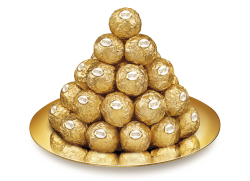
Ferrero rocher, the most sold praline in the world
To safeguard its consumers, the Nutella jar that ends up on the tables of Italian families is capped with a golden foil seal that consumers peel off, which makes the jar even more enticing to open.
A whole hazelnut immersed in a velvety cream similar to Nutella is encased inside a spherical wafer, which is covered with chocolate and hazelnut grains: this is Ferrero Rocher, another of Michele Ferrero’s ideas, and he is also the inventor of the complex machinery needed to produce it.
Today, it’s the best-selling chocolate praline in the world, with China at the top of the list of consumers.
Among the ingredients of its success are the gold wrapping paper and the decision to place it inside a paper cup, making it a luxury chocolate available to everybody.
-
1983
The first jar of nutella in new York
Nutella takes its first step to conquer the United States: it is imported in the northeastern part of the country.
In Italy, in a castle near Alba, Michele Ferrero presents an “Opera Sociale” named after his parents with the intention of offering a point of reference to the elderly who have collaborated with the company for at least twenty-five years.
The following year Filo Diretto, the house publication, will be published periodically and addressed to all the company workers. Maria Franca Ferrero—who still runs it today with passion and energy—will become its president in 1990.
-
1984
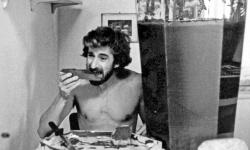
A movie for the legend
Nutella turns twenty. It is very popular with baby boomers, who are well past their adolescent years by now. The movie Bianca is released, directed by Nanni Moretti. Thanks to a thirty-second scene, it will turn Nutella into a legend with the public at large, the Holy Grail of happiness. From that moment on, Nutella becomes the representation of Italians dreaming about eating something delicious.
-
1985
after the earthquake, two plants built in southern Italy
In the Irpinia area, in southern Italy, which had been struck by the November 1980 earthquake, work begins on two new Ferrero plants: half of the investment was funded by State contributions.
The first of these is located in Balvano, Basilicata, and it makes white bakery products. The second one is located in Sant’Angelo dei Lombardi: at first it is dedicated to the production of Nutella and Duplo, but these products will soon be followed by Tronky and Kinder Bueno.
On September 28, in Alba the new ultramodern Ferrero Foundation headquarters, built according to the family’s wishes, is inaugurated, complete with recreational spaces available for former employees, outpatient clinics, and workshops.
-
1986
Ferrero celebrates its fortieth anniversary
The company celebrates its forty years in business, reaching
6,677 employees and a turnover of 926 billion lire (equal to
$1.5 billion in today’s money), having almost doubled in just five years.
-
1987
Duplo is launched in Italy
The Alba factory produces a new chocolate snack: a wafer with three domes filled with cream (similar to Nutella) surrounding a whole hazelnut. The name of the snack is Duplo, and its success will be long lasting.
-
1988
Ferrero Iberica in Barcelona
Ferrero Iberica opens in Spain, and it will also manage the Portuguese market. The offices are located in Barcelona and have just five employees. The challenge for Nutella is all uphill, as Spanish children have been raised on an imitation hazelnut spread, called Nocilla, taken there by the Italian company Star.
-
1989
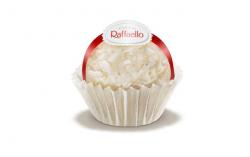
Ferrero ardennes is launched in Belgium
In Arlon, a city with a population of 25,000 in the region of Wallonia, Belgium, not far from the border of the Grand Duchy of Luxembourg, is the Ferrero Ardennes plant, occupying an area of 77,000 square meters (19 acres). The plant mainly produces Kind-
er Surprise, Schoko-Bons, a praline with a soft center of milk and crunchy hazelnut grains inside a chocolate shell, and the coconut-flavored praline called Raffaello.
Ferrero decides to enter the Easter egg market in Italy by producing Maxi Kinder Surprise.
-
1990
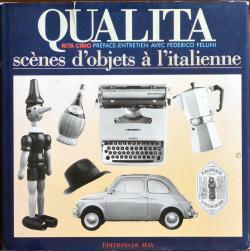
A French book: “Proustian Madeleine”
The French love Nutella as much as the Italians do. This is proven in the book by the writer and journalist Rita Cirio, Qualità: scènes d’objets à l’italienne, published in Paris, in which Nutella is defined as “a sort of spreadable and collective Proustian Madeleine”: this is the certification of its “social” nature.
Ferrero pralines have always been withdrawn from the market in the warm months, to reappear in the fall. One of the goals Michele Ferrero seeks to achieve is the de-seasonalization of chocolate, which tends to be sold less in summer. This is why Kinder milk-slice is commercialized, followed by Kinder Pinguí in 1992, and by Kinder Paradiso in 1994: for the first time these Ferrero products require cold storage. The coconut-flavored Raffaello praline makes its debut in Germany.
-
1991
The Ferrero Foundation becomes a charitable trust
The Ferrero Foundation of Alba is recognized as a charitable trust by the Italian government, and it is one of a group of nonprofit organizations with social missions known in Italy by their acronym ONLUS.
An agreement with Warner Bros. allows Ferrero, in Italy, to reproduce the characters of children’s bestloved cartoons, from Sylvester the
Cat to Tweety and Daffy Duck, on Nutella glasses.
-
1992
First Tic Tac lines in Poland
Ferrero Polska takes its first steps in the Polish market and the construction of a first small plant for the production of Tic Tac begins in Wilanów, not far from Warsaw. Production will begin a year later.
Expansion also continues in South America with commercial headquarters in Mexico. Ferrero’s first commercial offices open in China: consumers will especially love the Ferrero Rocher chocolate treat.
-
1993
Ferrero enters Greece and expands to Barcelona
The presence of Ferrero in Spain has significantly grown, despite the fact that the sale of chocolate has been traditionally hampered by the country’s high temperatures. Ferrero Iberica already has a hundred workers and a new, more modern plant is opened at El Prat del Llobregat, close to Barcelona, on February 18.
Ferrero Hellas is set up in Athens, and begins to penetrate the Greek market with the Kinder and Rocher lines. Harder, but slow and constant, is Nutella’s penetration in the market, as another hazelnut-based cream, called Merenda (the branding is in Italian, in Roman lettering), already exists, produced by the Pavlidis company.
-
1994
A plant in Brazil
Expansion abroad continues, with commercial offices in Hungary, the Czech Republic (the company called Ferrero Ceska sro), and in Scandinavia, where offices are in Mälmo, Sweden. The plant in Poços de Calda, in the state of Minas Gerais, Brazil, 240 kilometers (150 miles) from São Paolo, starts producing Nutella as well.
On November 5, there is another tragedy in Alba caused by flooding, which leads to the death of many people in Piedmont. The Ferrero plants suffer heavy damage and production is at a standstill for twenty-five days, but recovery is fast, thanks to the workers who volunteer to come to the factory.
At the Open Gate in Rome, a fashionable club in the Italian capital, the first Nutella Party is held in late November, with a huge sandwich and 30 kilograms (66 pounds) of hazelnut cream.
-
1995
From new Jersey, nutella made in the usa
In the United States, Ferrero opens a small factory in Somerset, New Jersey, which is inaugurated in June, with the Ferrero family in attendance. For many years it will also produce Nutella, until the large Canadian plant in Brantford starts production in 2006. The first Ferrero offices in Russia are opened.
In Poland, Nutella starts to be imported.
-
1996
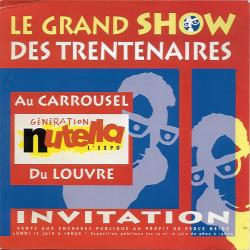
Production begins in argentina
September 30 is the first day of production at the La Pastora plant in Argentina, in the city of Exaltación de la Cruz, an hour’s drive from Buenos Aires.
In Paris, to celebrate its thirtieth birthday, an exhibition is held entitled Génération Nutella, in the prestigious
space of the Carrousel du Louvre, with the work of artists, actors, and poets.
Tic Tac sponsors the Ferrari F1 team, and will continue to do so until 2002.
-
1997
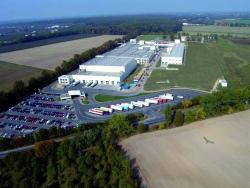
Pietro and Giovanni become Ferrero ceos
Nutella spreads toward Eastern Europe: another plant that produces Nutella is opened at Belsk Duzy, 60 kilometers (37 miles) south of Warsaw in Poland. Now there are fifteen producing plants of the Ferrero Group, with a total of 16,000 workers.
The third generation makes its entrance in the company management: Pietro and Giovanni Ferrero, Michele’s sons, become CEOs.
-
1998
Sponsor of the champions League
On May 20, in Amsterdam, Juventus Football Club loses to Real Madrid in the final of the Champions League. Along the sides of the playing field are Nutella billboards: the sponsorship continues for three years, with the finals of Barcelona ’99 and Paris 2000.
On August 9, in Italy, the bakers of Bedona, in Emilia-Romagna, make it into the Guinness Book of Records, after baking a roll that is about 332,66 meters (363 yards) long: it is the longest sandwich in the world, filled with cured meats, cheeses, and Nutella.
-
1999
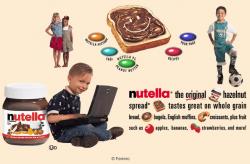
The first nutella website in the usa
For at least two years spontaneous groups of Nutella fans, such as the one on the platform called Tripod, have been forming on the Internet. The Ferrero legal office is adamant about preventing the illegal use of the brand. The first official site dedicated to the hazelnut cream goes online in the United States: www.nutellausa.com.
-
2000
Nutella online in Italy and Germany
The Internet sites www.nutella.it and www.nutella.de go online.
From March 16 to 19, in Turin, a big Nutelleria with 16-foot-tall lettering is set up for Eurochocolate: it is a stand, measur-
ing 1,000 square meters (3,289 square feet), where the hazelnut cream specialties, from appetizers to desserts, can all be tasted.
Another sports sponsorship begins, one that is still active today: Nutella becomes an official sponsor of the Italian national football team.
-
2001
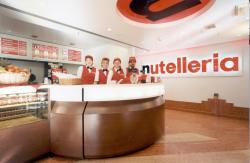
Nutelleria pilot stores open in Bologna and Genoa
On February 24, in Italy, the first official Nutelleria is inaugurated in Bologna. In December, another one is opened in a shopping mall. This trial will only last a few years: Ferrero will abandon the idea of opening a fast food chain, and will instead aim at fostering smaller “Nutella points” in coffee shops, and, later, Nutella Bars at Eataly.
In June, the exhibition called Cento anni di prodotto italiano is held in Padua, organized by the Galileo Science and Technology Park and by the Italian School of Design. One hundred Italian products that have made the history of design are on display, and visitors are asked to fill out a questionnaire placing them in order of importance. They choose Nutella first, followed by Vespa and by Fiat 500.
The Internet site www.nutella.fr goes online.
-
2002
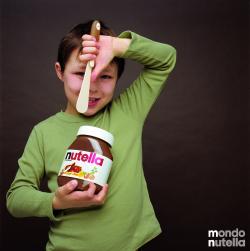
“Tartinutella,” a designer knife in France
Even design is attracted to the legend. In France consumers are drawn to the spreading knife called “TartiNutella” designed by the renowned architect Patrick Jouin.
Kinder Joy starts production, which is meant to replace Kinder Surprise in the summer: the milk and hazelnut cream is inside a plastic capsule that protects it, while the surprise is in another capsule. After its success in Italy, Kinder Joy will soon become available in the warm countries of the southern hemisphere.
-
2003
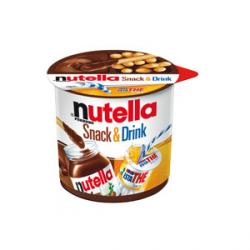
Snack & Drink and Mynutella.it
For the first time Nutella is sold together with bread sticks and Estathé. The package has three compartments for outdoor consumption.
On July 26, in Frankfurt, Germany, a Nutelleria opens at the Oberhausen shopping mall: it will close down after the Italian ones.
In Italy, in April, an Internet site makes its debut, anticipating social media: it is a virtual community of the product’s fans called MyNutella, for which thousands of people register.
-
2004
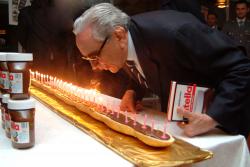
Nutella celebrates its fortieth anniversary in Italy
On April 20, in Italy, Nutella’s fortieth anniversary is celebrated, with a party in Turin and a convention at the Ferrero Foundation of Alba, which also sees the participation of the family: Michele Ferrero blows out the forty candles on a baguette spread with Nutella (photo).
On October 7, in Rome, another birthday is celebrated: the Kinder egg turns thirty. A dedicated exhibition is held.
The program of Ferrero’s social projects also gets off the ground; in June, the first plant to produce Kinder Joy opens at Yaoundé, Cameroon.
In Alba, refurbishment of a former spinning mill begins, which will be completed two years later. Since then it has hosted Soremartec, the Ferrero research center.
-
2005
The anniversary is also celebrated in France and Germany
France celebrates the fortieth anniversary of Nutella’s arrival. For forty days, in the heart of Paris, a “convivial, ephemeral, magical” temporary café named Table Nutella is the centerpiece.
In Germany the final event of the celebrations is held on May 29 at the Arena AufSchalke in Gelsenkirchen, a town in the Renania-Westphalia region. As many as 27,854 people gather for a special breakfast based on Nutella, setting the Guinness record for the biggest breakfast in the world.
In the yearly report of the international advertising agency Young & Rubicam, which assesses the state of health of the brands through consumers’ perceptions, it emerges that the best-loved brand by both young (ages eighteen to twenty-four) and old (over forty-five) is Nutella.
On April 26, Michele Ferrero turns eighty, and the president of Italy, Carlo Azeglio Ciampi, appoints him Knight of the Great Cross, Italy’s highest honor.
-
2006
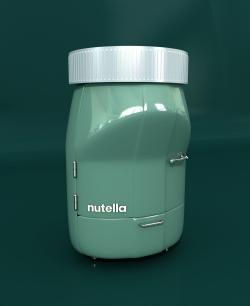
The canada plant is inaugurated
Two plants are inaugurated: a plant with a social mission in Walkerville, South Africa, and a major productive center in Brantford, Ontario, Canada, which is in full swing starting
October 20. The following year the plant will be further reinforced, and it will represent Ferrero’s most important productive platform for North America.
On September 29, in Alba, in the former spinning mill, the new headquarters of the Soremartec research center is inaugurated. A master’s degree is also instituted, named in honor of Michele Ferrero, and promoted by the Ferrero Foundation and the University of Turin, for the study of the science and technology of food and human nutrition.
Ferrero Rocher and Nutella, as design objects, represent Italy at the exhibition 50+2Y Italian Design, held in September at the National Art Museum of China (NAMOC) in Beijing.
In April, in Milan, design trials inspired by Nutella are held on the occasion of the Salone del Mobile: the designers Michelangelo Giombini, Matteo Migliorini, and Marco Sarno at the Fuorisalone present their NutMobili (“NutFurniture”) inspired by Nutella’s jar, shaped like a Pelikan ink bottle: a retro chest of drawers, furniture made from polycarbonate, and a 1950s-style refrigerator.
Also, Giombini introduces a Gustanutella (“TasteNutella”) metal spoon and a leather bag for carrying the jar around in case of sudden hunger pangs. Paolo Ulian displays his Finger Biscuit: a thimble-shaped biscuit that can be placed in the jar to be eaten in a single mouthful.
-
2007
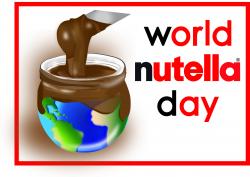
The first World nutella Day is held in the usa
Sara Rosso, a digital strategist, and her friend the lawyer and blogger Michelle Fabio, both of Italian descent, create a World Nutella Day on the Internet for February 5 (a date that has no link with the history of the brand).
Ferrero’s social undertakings continue to develop with a plant in Baramati, India, while a new plant is born in Cameroon, 5,000 square meters (1,640 square feet) in size.
Ferrero Energie is set up in Alba, to develop plant strategies for greater economic and environmental efficiency, in addition to the acquisition of the necessary energy for the Group’s activities.
-
2008
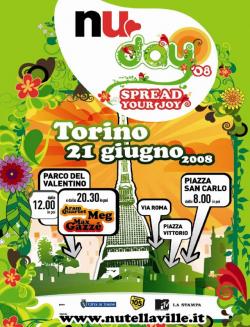
A Nuday in Italy to launch the nutellaville website
On January 28, in Italy, an attractive brown-and-white calfskin leather handbag is presented to the press, in the shape of a jar: it’s the Gilli Nutella Cube, produced in a limited edition of one hundred.
On June 12, in Turin, to celebrate the arrival of summer, the first (and for now the only) Nuday is held in the town’s historic squares, gardens, and other lo-
cations, where people can “share stories, passions, anecdotes and pieces of life inspired by Nutella.”
On the same day, the website www.nutellaville.it is launched: a virtual city, “poetic and imaginative,” where films, photographs, poems, and songs inspired by Nutella can be found.
-
2009
Breakfast for the G8 leaders
In July, in L’Aquila, Italy hosts the G8 summit for world leaders: on their tables at the business breakfast is a snack consisting of fruit, milk, bread, and Nutella.
A new plant opens in Vladimir, Russia.
On May 6, the announcement is made that Ferrero is the most reliable company in the world, ahead of Ikea and Johnson
& Johnson. The award is given to the two brothers, Pietro and Giovanni, in Amsterdam, on May 29. Every year the Reputation Institute of New York presents its Global Rep Trak Pulse: the reputation of the great world brands is calculated according to the responses of over sixty thousand people in twenty-seven countries.
In Villers Écalles, the city in Normandy where the Ferrero plant is located, the fiftieth anniversary of the company in France is celebrated, and Rue Pietro Ferrero is inaugurated in honor of its founder.
Breadsticks and hazelnut spread are sold together in a new package: this is Nutella & Go, the evolution of Snack & Drink, which, after its debut in France in 2008, is now sold in Italy and in other countries.
-
2010
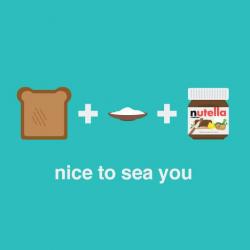
a Facebook page
On April 15, having abandoned the project Nutellaville, the first post on the Nutella Facebook page is published: in just three months the page exceeds 1.5 million fans, and on October 7, the milestone of 2 million “likes” is reached. The page had only been created one year before.
On May 26, the hazelnut and cocoa spread’s first official tweet on Twitter is heard.
On July 5, in Rome, the first report on Corporate Social Responsibility (CSR) is presented.
On the same day, Italian Foreign Minister Franco Frattini gives the Winning Italy Award to brothers Pietro and Giovanni Ferrero: an award that is given to the figure or the company that has “been capable of promoting and valorizing Italy’s image in the world.”
-
2011
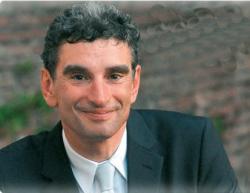
The death of Pietro Jr.
On April 18, while in South Africa, where he is working on one of the company’s social undertakings, Pietro Ferrero (photo) suddenly dies at the age of forty-seven. The funeral is held in Alba on April 27. The whole city and countless famous names are there to pay tribute.
After his brother’s death, Giovanni Ferrero is the sole CEO of the Group. The ambassador Francesco Paolo Fulci, formerly vice president of the international holding, also takes over the post of president of Ferrero S.p.A. Italia.
Italy celebrates the 150th anniversary of national unification, and among the objects displayed at the exhibition Making the Italians, held at the Officine Grandi Riparazioni in Turin, is a red, white, and green jar of Nutella.
-
2012
The favorite brand in Germany
The German magazine Lebensmittel Praxis, in a survey among the buyers, branch directors, and managers of large distribution chains, elects Nutella as “Händlers Liebling,” the favorite brand for distributors, one that they cannot do without.
In April, in California, a class action suit is brought against Ferrero USA by the mother of a four-year-old girl: she believes that the company’s advertising is deceitful and the indications on the label concerning the product’s nutritional characteristics are unclear. The company reaches an agreement with consumers for a symbolic award of four dollars for anyone who can show, having joined the class action suit, that the product had been purchased between January 1, 2008, and February 3, 2012.
-
2013
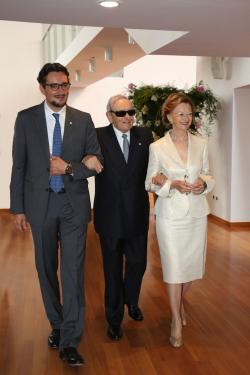
Two new plants open in Mexico and Turkey
On June 18, in Mexico, with an investment of $200 million, a plant is opened in San José Iturbide, Guanajuato. This is followed by another one, the Group’s twentieth, on September 8, in Manisa, Turkey, home to most of the hazelnuts used to produce Nutella.
On December 2, in Chicago, the first Nutella Bar in the world opens inside the Eataly store.
On March 13, a great party is organized to say farewell to win-
ter in Moscow. Called “Maslenista,” it is organized by Nutella in Sokolniki Park: two thousand warm blinis are served with hazelnut cream.
In July, for the third consecutive time, Ferrero conquers the top spot in the dreams of job seekers in Italy: it comes first in the “50 Best Places to Work” ranking drafted by the American website Glassdoor based on employees’ opinions.
On October 17, after several articles in the international press hypothesizing the possible sale of Ferrero to the Swiss giant Nestlé, the CEO Giovanni Ferrero denies any talks are in progress by publishing a full-page ad reading: “Ferrero is not up for sale for anyone.” The family remains firmly at the helm of the Group: Giovanni Ferrero with his parents, Michele and Maria Franca (photo).
-
2014
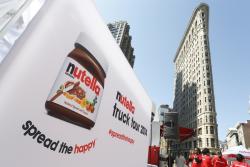
Celebrations for a worldwide birthday
Celebrations for fifty years of the brand are held on May 18, for the first time contemporaneously around the world, with just one big Nutella Day, and events
in Italy, France, Germany, the United Kingdom, Poland, Russia, the United Emirates, Canada, the United States, and Australia. The website www.nutellastories.com receives more than 74,000 comments proclaiming affection for Nutella.
In January, Poste Italiane dedicates one of the year’s stamps to Nutella’s fiftieth anniversary. The stamp is released on May 14. In July, the acquisition of Oltan in Turkey is announced,
a company that specializes in processing hazelnuts, with its main plant in Trabzon: it has five plants that process 8,000 metric tons (8,800 tons) of hazelnuts, for a turnover of $500 million.
The Nutella brand is extended with a new product, which contains a cream and hazelnut filling. It is Nutella B-ready, “a bread wafer filled with Nutella.” For now, it is only available in Italy.
-
2015
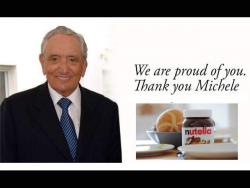
The death of Michele Ferrero
On February 14, Michele Ferrero dies at eighty-nine in Monte Carlo. The funeral is held in Alba, on February 18.